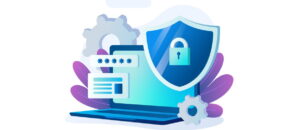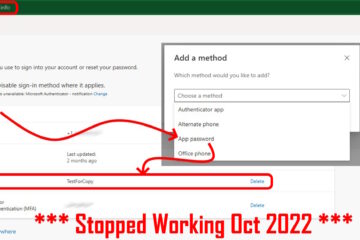In today’s era, as our lives are closely connected to the digital world, safeguarding our private information has become a pressing matter. Join us on a complete exploration of the realm of data security – an essential defense against the growing wave of online dangers.
This piece will delve into the core of data security: how it plays a crucial part in keeping personal, corporate, and government data safe from being accessed, tampered with, or stolen by unauthorized individuals. From understanding the significance of data security in preserving confidentiality, integrity, and availability, to discovering the fundamental practices that fortify our digital landscapes – this article is a must-read.
Data breaches have surged to alarming proportions, imposing colossal costs on entities that fall victim. In 2022 alone, the aftermath of stolen or compromised credentials culminated in an average financial loss of $4.50 million. The ominous trend continues, as exemplified by the distressing statistics from the first quarter of 2023, revealing that over six million data records were compromised globally. The past echoes the present, as the final quarter of 2020 bore witness to a staggering 125 million exposed data records.
As you traverse the lines ahead, you’ll gain insights into the mechanisms that empower data security and the prudent practices that act as its cornerstone. Prepare to navigate the contours of this vital subject, equipping yourself with the knowledge to safeguard against the lurking shadows of cyber threats.
What Is Data Security?
Data security, a vital component of cyber security, involves shielding digital information from sneaky intruders, preventing them from peeking, tampering, or swiping at any stage. Imagine it as a fortress guarding valuable secrets, extending from locks on physical gadgets to clever rules controlling who gets in. This safeguarding magic covers not only the hardware and software stuff but also the smart rules made by the boss (that’s organizational policies) to keep everything in line. So, in simple terms, data security is like a superhero shield for digital stuff, making sure it’s safe from bad guys!
Why Is Data Security Important?
A robust data security strategy extends its protective wings over a multitude of aspects, ensuring not only the defence of valuable information from malicious hackers but also safeguarding against internal risks and unintentional slip-ups that consistently top the list of data breach causes. Here is why data security is essential:
- Safeguarding Confidentiality
Data breaches have become synonymous with identity theft, financial loss, and tarnished reputations. Robust data security ensures that sensitive information remains accessible only to authorized individuals, thwarting the efforts of malicious hackers seeking unauthorized access. By preserving confidentiality, data security mitigates the potential fallout of breaches, shielding both individuals and organizations. - Ensuring Data Integrity
The integrity of data is fundamental to informed decision-making and public trust. Data security measures prevent unauthorized alterations or manipulations of critical information. In a landscape where data is a cornerstone of operations, ensuring its accuracy and authenticity is imperative. Data security acts as a digital guardian, maintaining the fidelity of information even in the face of potential threats. - Enabling Uninterrupted Availability
Operational continuity hinges on the availability of data. Cyber attacks, such as Distributed Denial of Service (DDoS), can paralyze systems and services by disrupting access to data. Data security strategies safeguard against such disruptions, ensuring authorized users can access information when needed. By bolstering data availability, organizations can maintain productivity and minimize the impact of potential attacks. - Navigating Regulatory Landscapes
In various industries, adherence to regulatory mandates is non-negotiable. Data security plays a pivotal role in meeting these requirements. Regulations mandate the protection of specific data types, and non-compliance can lead to legal repercussions and reputational damage. By implementing robust data security measures, organizations can navigate these regulatory landscapes with confidence, avoiding the pitfalls of non-compliance.
Best Practices Of Data Security
Implementing best practice of data security requires a proactive approach fortified by a set of best practices. By adopting these guidelines, individuals and organizations can navigate the intricate landscape of digital threats and ensure the safety of their invaluable data. Here, we delve into key strategies that underpin a robust data security framework.
- Start your Online Security Journey With HTTPS Encryption
Embarking on a journey towards robust data security begins with a fundamental step: embracing HTTPS encryption. When you access websites, ensure they’re secured with HTTPS in the web address. This small “s” indicates a secure connection, safeguarding your data during transmission. To bolster your website’s security, you should buy SSL certificate. Lots of companies think that buying SSL certificates costs a lot, especially for small businesses. But the fact is, there are many cheap SSL certificates available that give you the same level of security as the expensive ones.
This digital certificate encrypts the data exchanged between users and your website, thwarting potential eavesdropping by malicious entities. By making HTTPS a priority and investing in an SSL certificate, you establish a solid foundation for protecting sensitive information and fostering a safer online experience. - Regular Updates to the Software and Operating System
Consistently updating your software and operating system is akin to reinforcing the walls of your digital fortress. These updates are crucial for bolstering your defense against ever-evolving threats. Software updates frequently include vital security patches that guard against vulnerabilities that hackers could exploit. By enabling automatic updates, you ensure that your system can actively enhance its defenses. Cybercriminals often target outdated software, seeking vulnerabilities. By remaining vigilant and allowing updates to install, you fortify your digital defenses. This practice is straightforward yet immensely effective, empowering your devices to ward off potential breaches, enhancing the security of your data, and overall elevating your digital experience. - Have a Robust Employee Training and Awareness Program
Empowering your team with knowledge becomes a powerful shield against data breaches. A comprehensive employee training and awareness program familiarizes your staff with potential risks, equipping them to recognize phishing attempts and other cyber threats. Educated employees become your front line of defense, actively thwarting attacks through informed decision-making.
This program should encompass safe email practices, secure password management, and the do’s and don’ts of sharing information. Regularly updating employees on emerging threats ensures they stay ahead of cyber adversaries. By investing in your employees’ cyber literacy, you erect a critical barrier against breaches, transforming them into vigilant guardians of your organization’s digital domain. - Use Security Plugins
Enhance your website’s fortifications by harnessing the power of security plugins. These digital guardians are like sentinels, tirelessly monitoring your online space for potential threats. Whether managing your blog or operating a complete e-commerce website, the utilization of security plugins presents an extra level of protection against harmful actions. These tools can identify weaknesses, hinder questionable visitors, and deliver instant notifications. Given the array of choices accessible, you have the freedom to select plugins that align with your distinct requirements. This fortifies your website’s durability without necessitating advanced technical expertise. By integrating security plugins, you augment your online security posture, keeping your digital presence safe from prying eyes and potential attacks. - Use Safe Data Storage Platforms
Choosing secure data storage platforms is akin to placing your valuables in a fortified vault. Opt for platforms that prioritize encryption, both during data transit and while at rest. These platforms shield your data from unauthorized access, even if breaches occur. Seek out services that adhere to the standards and regulations of the industry. These services ensure that your information remains confidential and trustworthy. When you choose cloud storage providers that provide strong access controls and end-to-end encryption, you’re enlisting crucial partners for safeguarding your data security. By entrusting your data to safe storage platforms, you reinforce the barriers against potential breaches and foster a secure environment for your valuable information. - Conduct Regular Data Backups
Regular data backups are like having a spare key for your digital realm. They provide a duplicate copy of your important information, safeguarded separately. These backups act as a safety net against cyber attacks, hardware failures, or accidents that could lead to data loss. Schedule automatic backups for your files, databases, and systems. Examine both on-site and off-site choices for storage to guarantee backup. If unforeseen situations arise, you’ll be able to quickly return your data to a previous condition. Data backups are a robust plan B, allowing you to recover and rebuild, ensuring the security and integrity of your digital domain. - Be on the Lookout for Phishing Scammers, they are After your Data
Vigilance is your shield against crafty phishing scammers who aim to snatch your valuable data. These cyber tricksters employ deceptive tactics, disguising themselves as trustworthy entities in emails, messages, or websites. They lure unsuspecting victims into sharing sensitive information or clicking malicious links that can lead to data breaches. To ward off these threats, educate yourself and your team about phishing warning signs, such as suspicious sender addresses, urgent requests, and misspelt URLs. Always verify the authenticity of requests before sharing information. A cautious eye and a skeptical mindset can thwart their ploys and preserve your data’s sanctity. By staying one step ahead of phishing scammers, you erect an essential barrier against potential data breaches, ensuring your digital fortress remains unassailable. - Install Security Firewalls
Think of security firewalls as digital guards standing watch at your virtual gates. These protective barriers monitor and filter incoming and outgoing data, allowing safe passage to legitimate information while fending off unauthorized access. Firewalls scrutinize network traffic, detecting and blocking potential threats like malware and hacking attempts. For added protection, consider hardware and software firewalls, as well as next-generation options that use advanced algorithms to identify suspicious patterns. By deploying security firewalls, you create a fortified barrier between your digital assets and the outside world, preventing unwanted intrusions and bolstering your data’s security. - Use Antimalware Software
Arming your devices with antimalware software is essential. Think of it as a vigilant guardian scanning your digital world for lurking dangers. Antimalware software detects, quarantines, and eradicates malicious software like viruses, Trojans, and spyware. Regularly update this software to ensure it’s equipped to combat new threats. Whether you’re surfing the web or downloading files, this digital protector remains on high alert, safeguarding your data and devices from potential harm. By employing antimalware software, you create a robust barrier, preserving the health of your digital ecosystem and minimizing the risk of falling victim to malware attacks.
Conclusion
Data security emerges as a non-negotiable shield. By adopting practices such as HTTPS encryption, employee training, regular updates, and vigilant awareness, individuals and organizations can stand resilient against the rising tide of cyber threats. With secure data storage, backups, firewalls, and antimalware software, the digital landscape transforms from a potential danger zone into a realm of safeguarded possibilities. By embracing these best practices, we empower ourselves to navigate the digital world with confidence, ensuring the safety and integrity of our most precious asset – data.




2 Comments
6 Features To Include In Your Company’s Mobile App – Up & Running Technologies, Tech How To's · January 30, 2024 at 7:40 pm
[…] not just about data security; it’s also about safeguarding your app against malware, phishing, and other cyber threats […]
Data Security in Virtual Environments: Protecting User Information – Up & Running Technologies, Tech How To's · January 9, 2024 at 8:01 pm
[…] digital era has ushered in an unprecedented need for robust data security measures, especially in virtual environments. With increasing reliance on online platforms for both personal […]